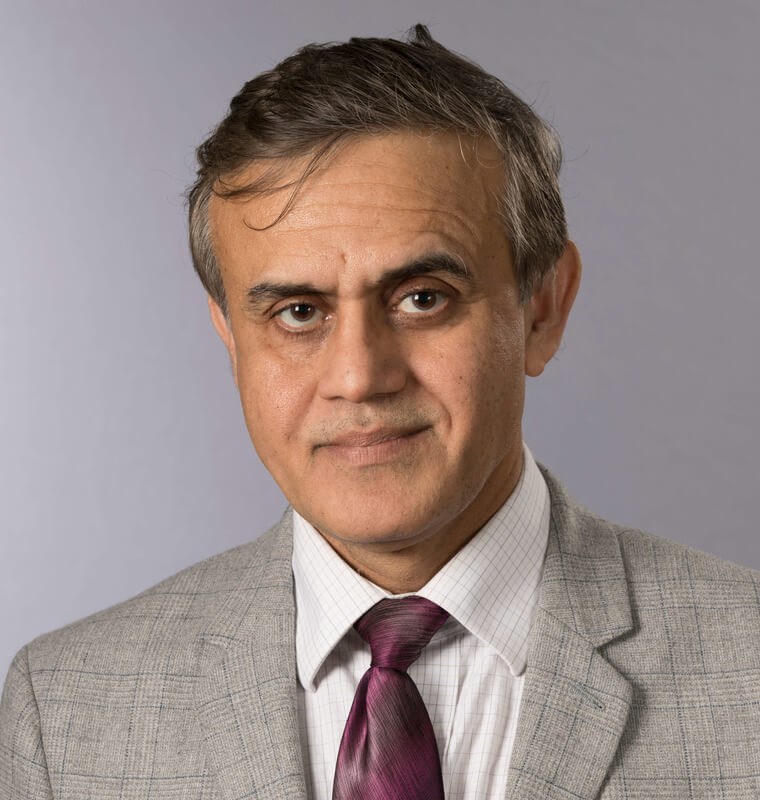Canada News
Toronto mental health hospital to develop therapy geared towards South Asians

CAMH psychiatrist Dr. Farooq Naeem said he will be consulting with patients, caregivers, mental health professionals and community leaders as he adapts an existing CBT manual to meet the specific cultural needs of South Asian patients. (File Photo: camh)
TORONTO — Canada’s largest mental health hospital is developing a specialized form of psychotherapy catered toward Canadians of South Asian origin to help members of that community overcome stigma around mental illness and seek treatment.
The Centre for Addiction and Mental Health in Toronto says it hopes to have a culturally adapted manual on the targeted form of Cognitive Behavioural Therapy — or CBT — as well as a therapist training package ready by November.
CAMH psychiatrist Dr. Farooq Naeem said he will be consulting with patients, caregivers, mental health professionals and community leaders as he adapts an existing CBT manual to meet the specific cultural needs of South Asian patients.
“The evidence shows that CBT is as good as medications to treat depression and anxiety, as well as to prevent relapse,” said Naeem.
“But we also have a lot of data that shows that CBT does not work as well with people from non-western cultural backgrounds. When we adapt it for other cultural contexts — as we’ve done for other racialized communities — it becomes far more effective.”
Naeem said he hopes the culturally-adapted CBT, which can be offered outside hospitals, will help reduce the stigma surrounding mental illness for South Asians and encourage members of the community to seek treatment when needed. A $1 million grant from Health Canada is helping to fund the CAMH project.
The specialized therapy manual and training package being developed could serve as a model for other types of culturally-adapted CBT programs across Canada in the future, Naeem added.
Canada is home to 1.6 million people of South Asian origin, one of the largest racialized groups in the country. CAMH said there were higher rates of anxiety and mood disorders for the population compared to immigrants from other parts of the world largely due to cultural and socio-economic factors.
The hospital said people of South Asian origin also have the highest perceived barriers to mental health treatment and are 85 per cent less likely to seek treatment for mental illness than those who identify as white.
Shreya Kumar, who was born in India and now lives in Ontario, knows first-hand how hard it can be for South Asians to seek treatment for mental illness.
The 26-year-old said she had her first major depressive episode at the age of 17 while living in Kuwait. Getting treatment for mental illness was unheard of in her community, she said, and it took her five years to get help.
“There is a culture-wide disdain for weakness among South Asians. If you’re anxious, you’re weak. If you’re depressed, you can’t cope and none of that is seen as a clinical thing, said Kumar, who works as a freelance graphic designer.
“There is no language around mental health and mental wellness, there isn’t really a tendency to talk about your feelings either. If you’re faced with a challenge, you should be able to cope with it and if you’re not, you’re doing something wrong.”
Kumar, who has now been benefiting from CBT for years, said she used to blame herself for her mental state.
“The illusion of being alone in the problem was what was the most debilitating thing for me,” she said. “When a culturally adept service is available and advertised well enough and people know about it, hopefully it encourages help-seeking behaviour and early intervention.”
Dr. Saunia Ahmad, the director of the Toronto Psychology Clinic, said there are a variety of barriers to South Asians that prevent them from seeking treatment, including cultural elements like arranged marriage, religion and language.
CBT, as it was originally developed, was created from a western point of view that assumes a white model of what healthy, human behaviour looks like, she said.
“A lot of people don’t even know what a psychologist is in South Asia. It’s a concept that you derive from North American values,” said Ahmad, who is also of South Asian descent. “It’s really important for us as therapists to recognize that where they’re coming from is also culturally circumscribed.”
With more adaptive programs, Ahmad said South Asian people will begin to feel recognized.
“They’ll start to feel like there’s a focus on them and understanding them,” she said.





















